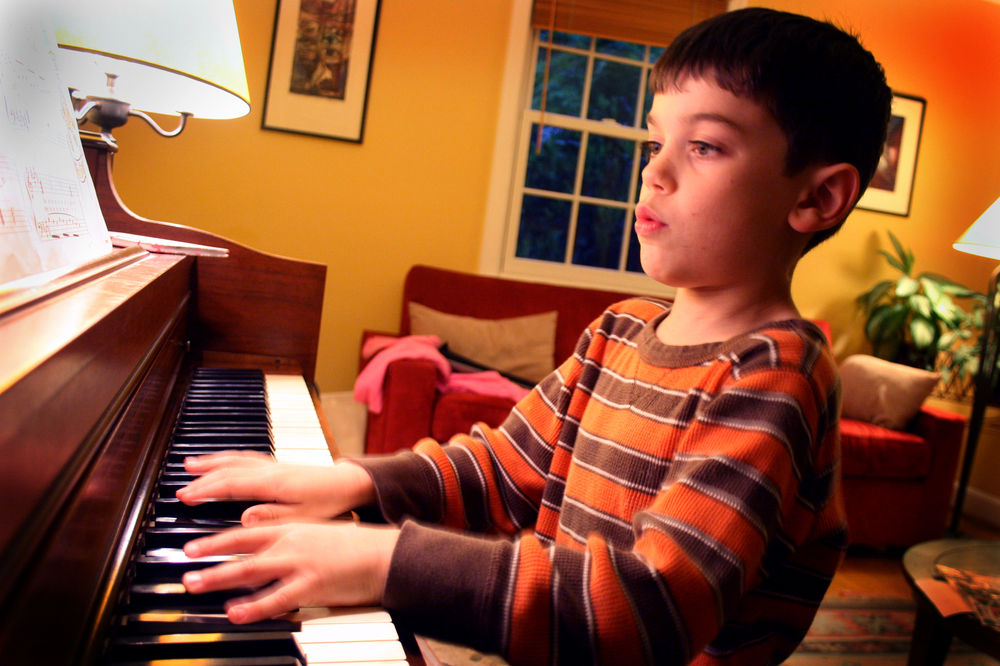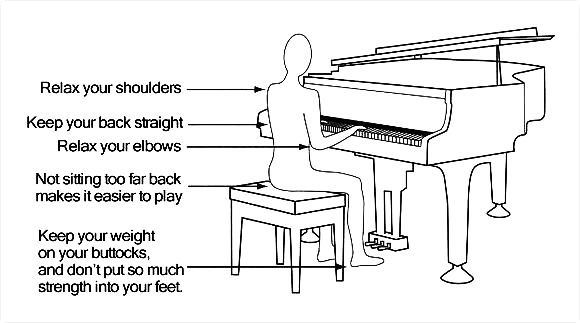Uncategorized
6 tips to be more successful in piano practice
6 tips to be more successful in piano practice


Understanding and using correct ways of practising is one of the most important things when it comes to playing the piano. Someone once said that every person owns only 5% of talent and the rest of it is about working on that talent, “polishing” it to the highest possible level. Therefore, in this article, you will find very useful advice on the accurate ways of practising and maybe started being aware of what you are doing wrong and how important and precious is the time you spend practising at home. This will help you to become the best pianist you can be!
6 tips to be more successful in piano practice
The following piano tips are going to help you to be more successful in practising piano:
1. To sit correctly:
During my studies at the Academy, I remember my Professor saying that everything goes “under the bridge” if the first step of sitting correctly is not right. She gave me an example: A student of her was preparing an exam and from lesson to lesson she was making same mistakes wondering what is she doing wrong. After trying every possible way of solving the problem, a Professor asked her one simple question: “Could you please show me HOW you practise when you are at home?” The student was very honest about it; therefore, she crossed her legs like she was drinking coffee and started “practising”. I don’t have to tell you the rest of the story because the conclusion is very obvious. And I don’t have to tell you that from that moment when she started being aware how her not sitting in a proper position affected her performance, the result came IMMEDIATELY.
To remind you all, a correct way of sitting is:
- Put a stool straight and in the middle of the keyboard and make sure that you are not sitting too high or too low. (Find further information below).
- Sit straight with both legs on the floor, not too close and not too far away from the keyboard
- Make a right posture of your hands and start playing. You will know whether you adjusted the stool correctly or not by looking at your hands- if they are not “in the line” (90 degrees) with the keyboard, you will know that the stool is not adjusted properly. Pay special attention to your wrist- it has to be in a natural position, otherwise you won’t be able to produce the proper sound and, most importantly, you will waste your time practising same bars over and over again without any result.
2. Warm up!
Compare playing the piano with doing some sport activity. Before going into anything, every athlete has to warm up his/her muscles. As we use our muscles for playing why this step is so often dismissed? Start warming up by using scales, technical exercises or etudes. You don’t have to spend one hour doing this. Just 10-15 minutes will definitely help and you are going to be readier for the rest of your practice.
3. Focus on the most difficult parts first:
Students often start every piece from the beginning and usually give up after playing a half of it (or even less than that). Why to start practising every time from the beginning, especially if you already know this for sure?
When you are fresh and concentrated, focus on the most difficult parts. This is one of many piano sight-reading tips that will help you avoid getting stuck, successfully reading the entire score.
Remember this: If you are not able to repeat the part or bar you are working on at least THREE TIMES perfectly correct that means that this is not done and you are not sure about it. Very important is to make BREAKS in between repetitions. That way you can realize how you are doing and how you feel every time you start it over.
4. Repeat what you already know:
Now we come to the point when we repeat what is already considered done. You can repeat it at a slower tempo, at a faster tempo, using different articulation or just go through it a couple of times to refresh the memory.
Don’t waste your time and energy on parts you already know very well.
5. Don’t forget to rest in between:
Almost every student has a couple of pieces to practise. Unless you are a complete beginner, very rarely you will have just one piece to learn. Therefore, don’t forget to rest in between pieces by taking a glass of water, stretching your arms and body or simply walk around the room for a while. That way you will always be “fresh” to start practising again a new composition.
6. Finish with “brain work” and set a plan for the next practice:
Last but not least, after you consider yourself done with “practical part”, it is very important to analyse your practice- what you have done, on what parts you have to pay attention to, what parts are easy for you or giving you satisfaction …and finally, set a plan for your next practice- What you are going to do in order to make your piece even better?
I hope these advices will help you in being a better and more successful piano player. We all want to have results in a short period of time. Make sure you use these steps and you are going to be one!
#wkmtarticles #pianolessonslondon #adultpianolessons #pianolessonsforbeginners #pianoteacherslondon
